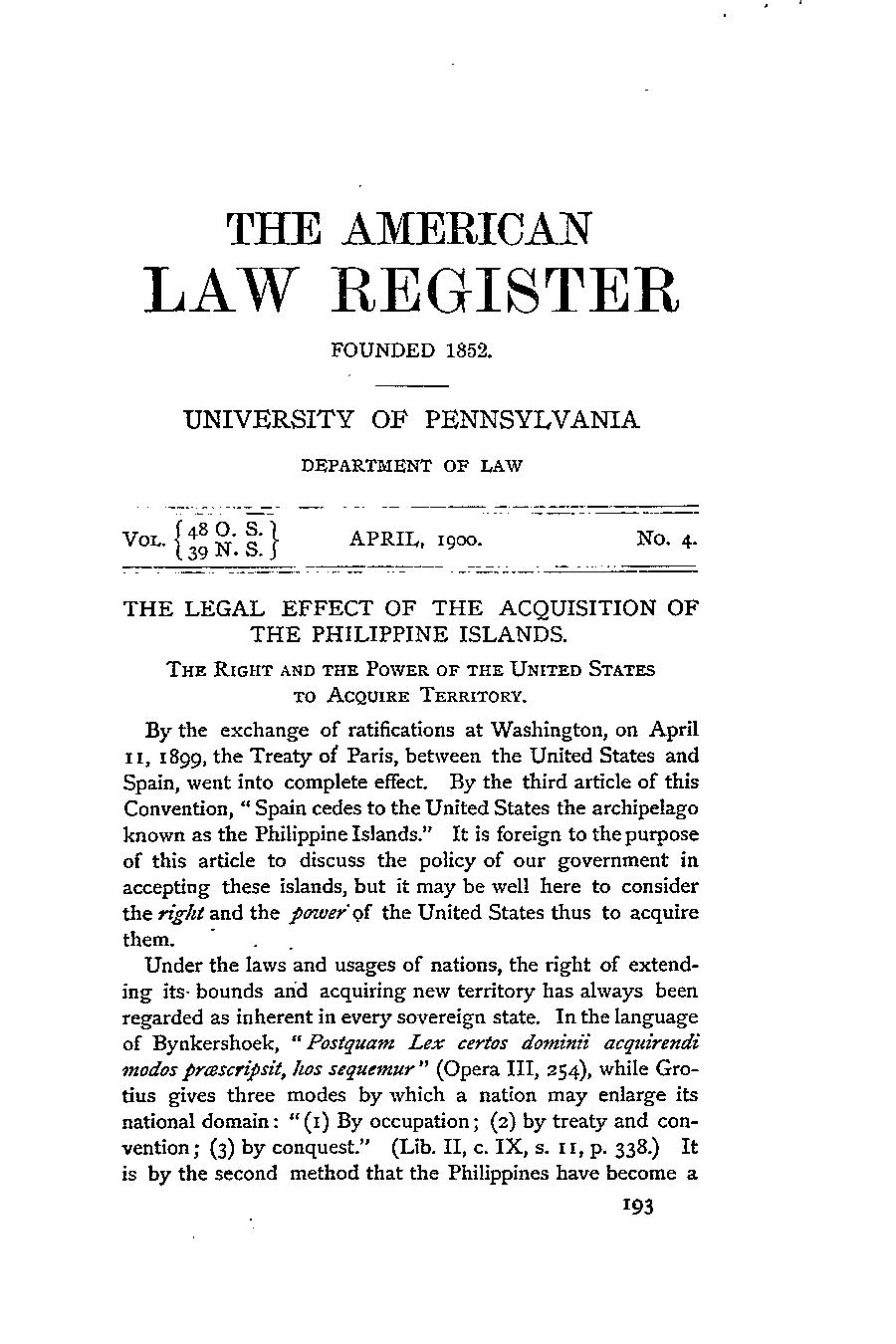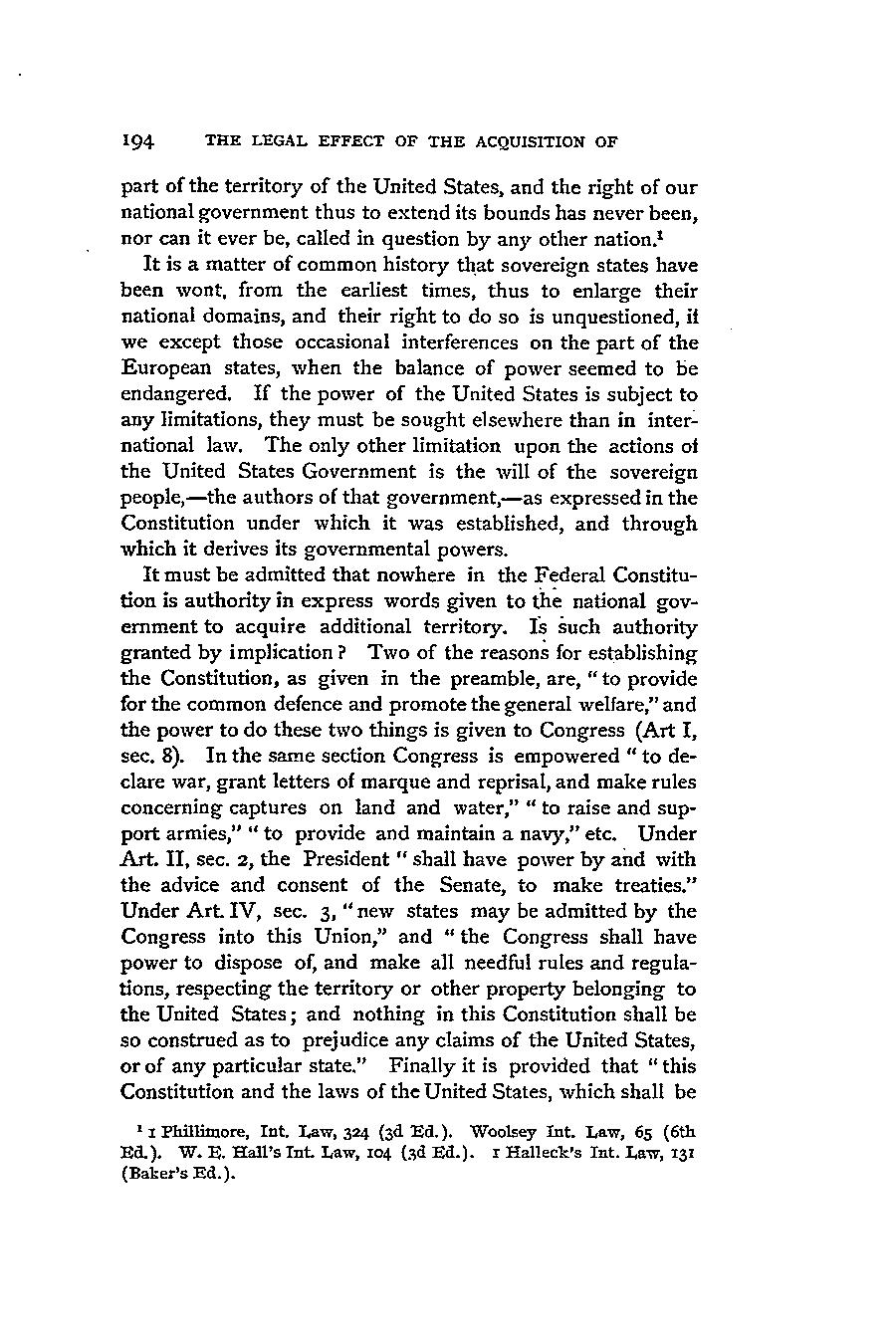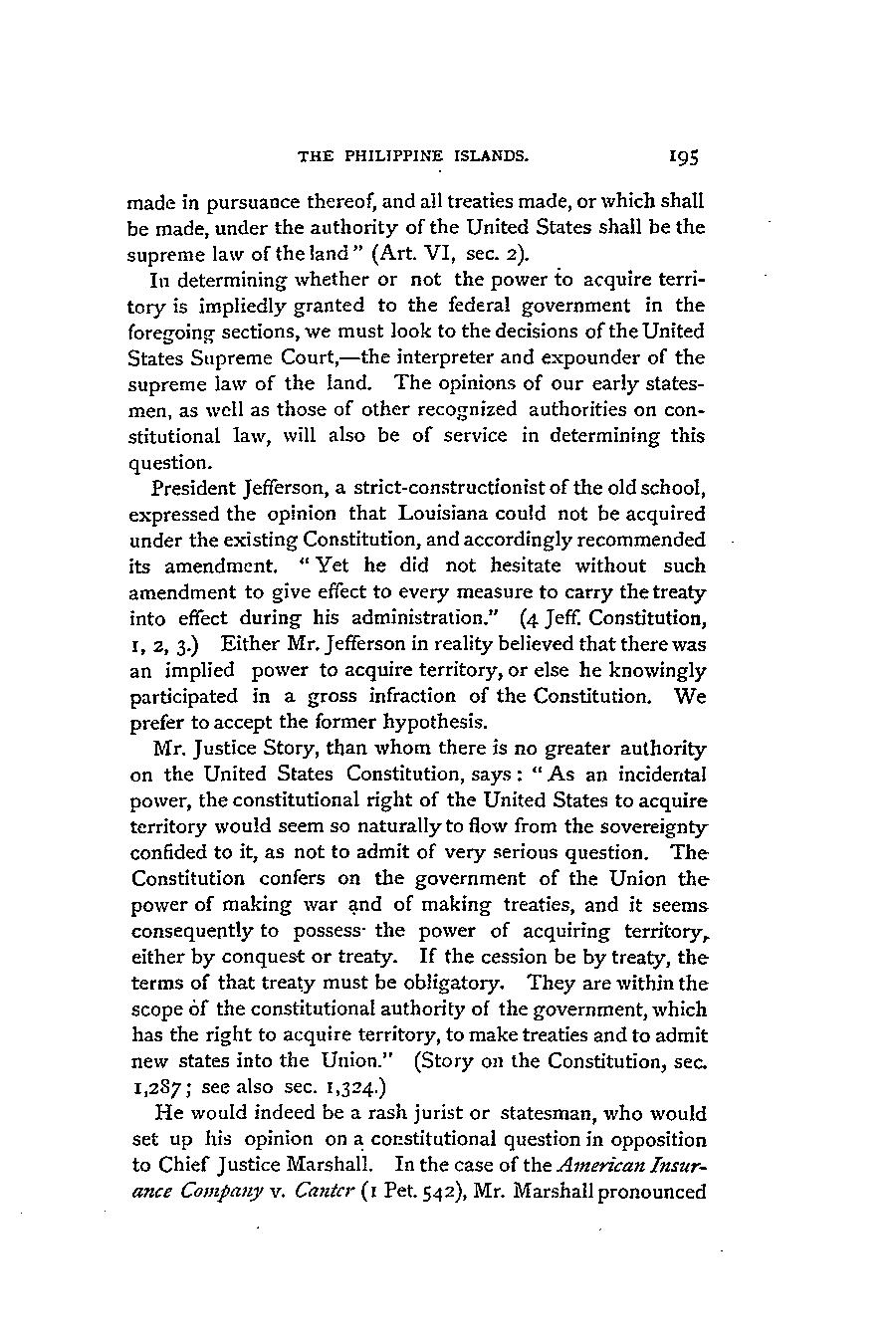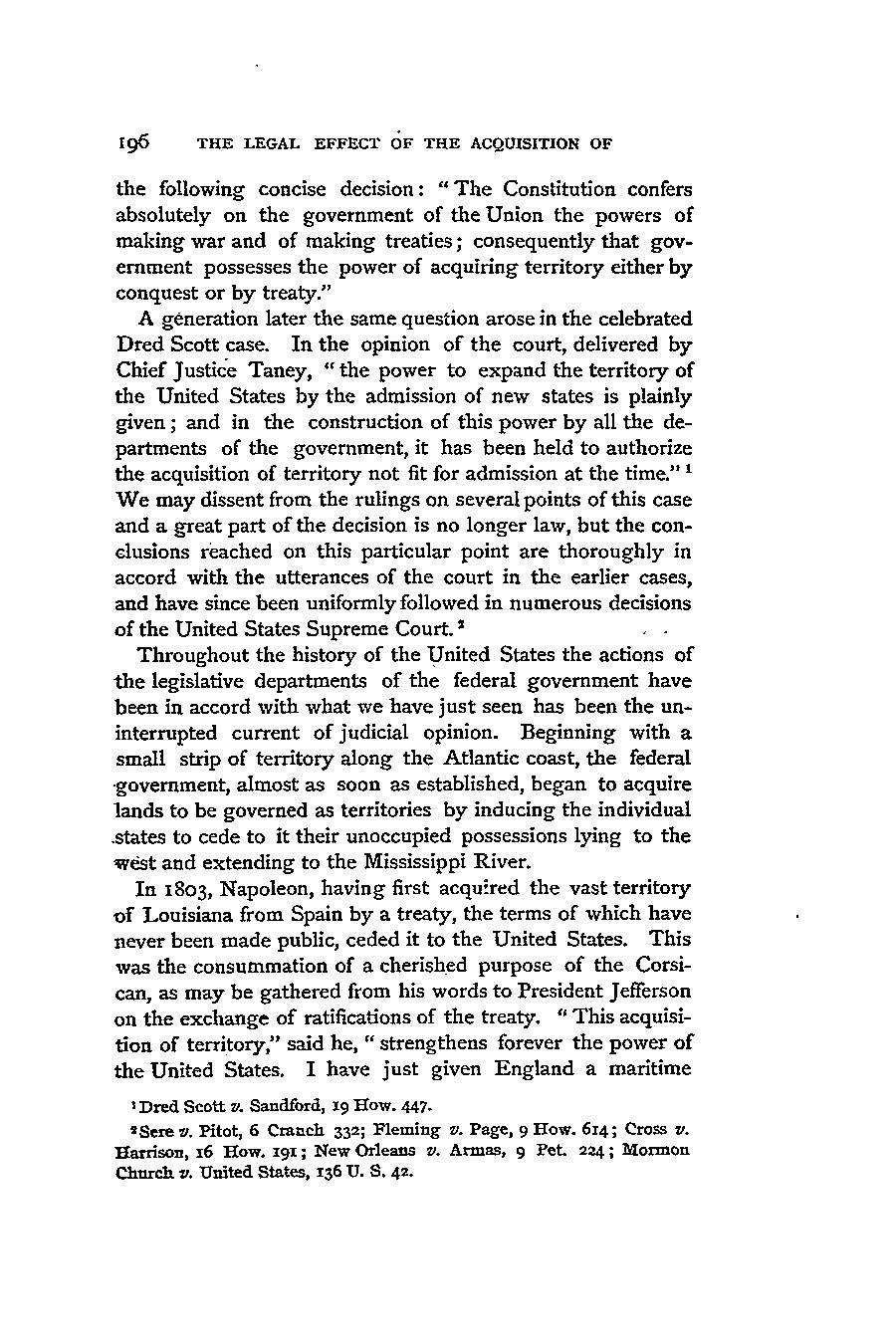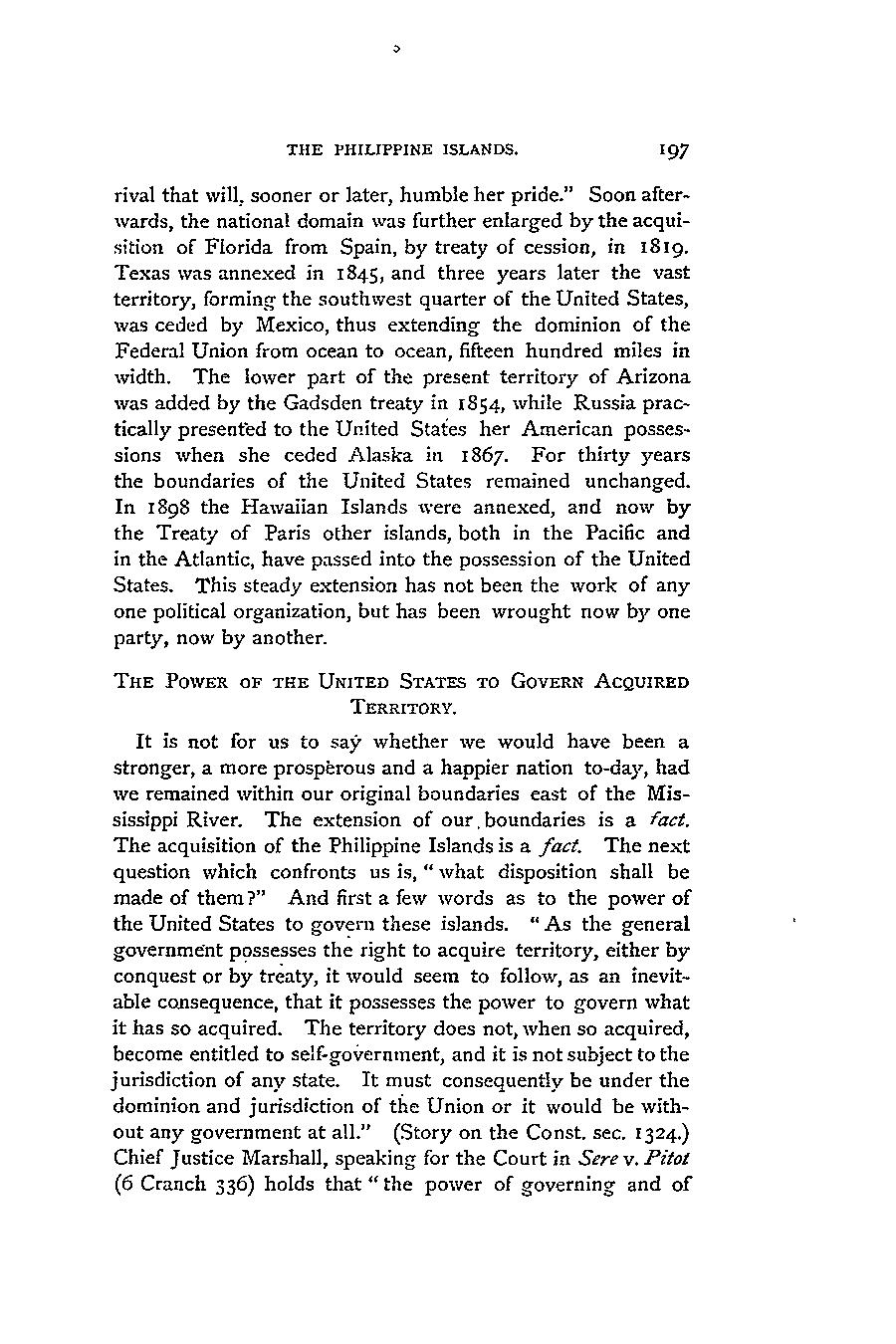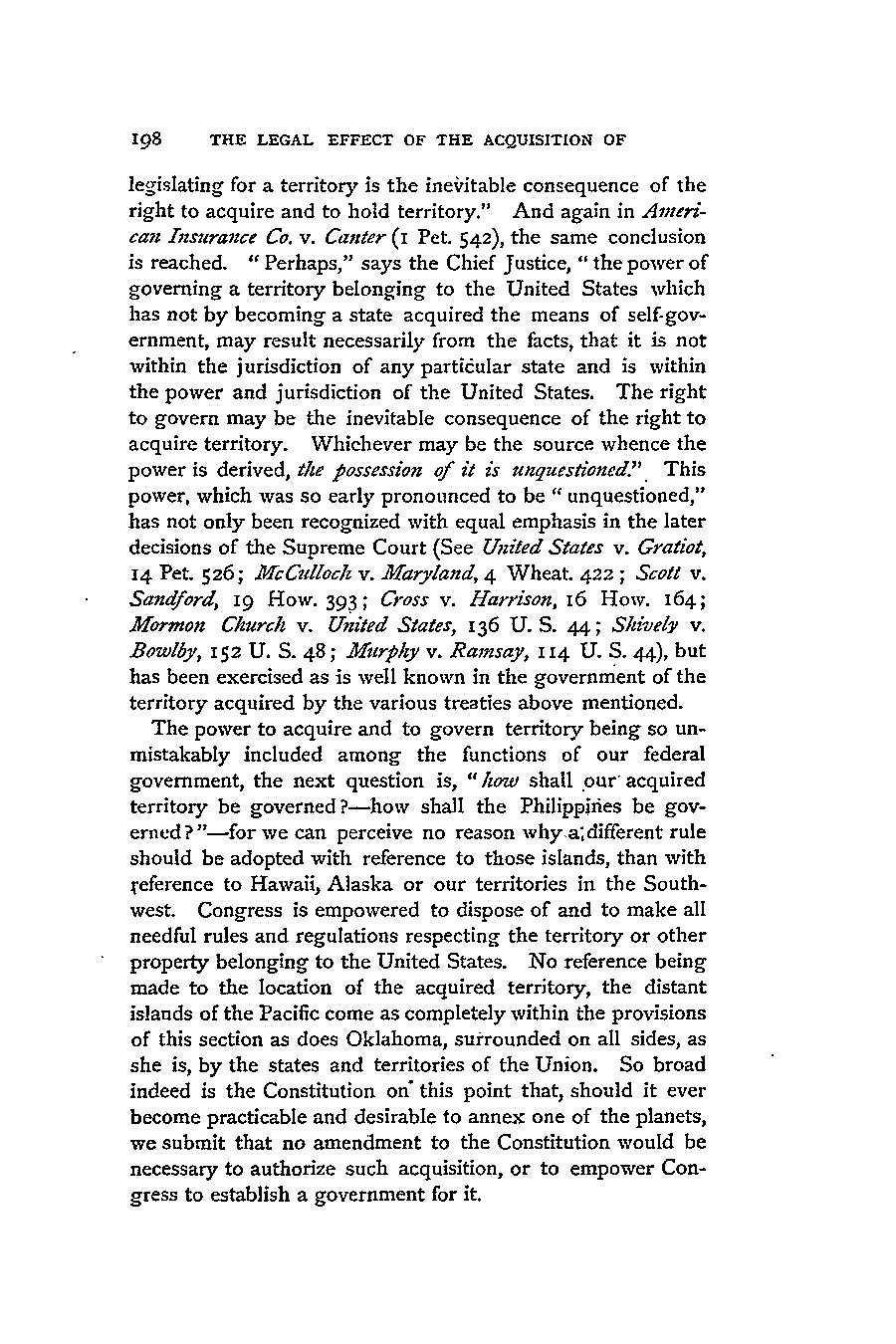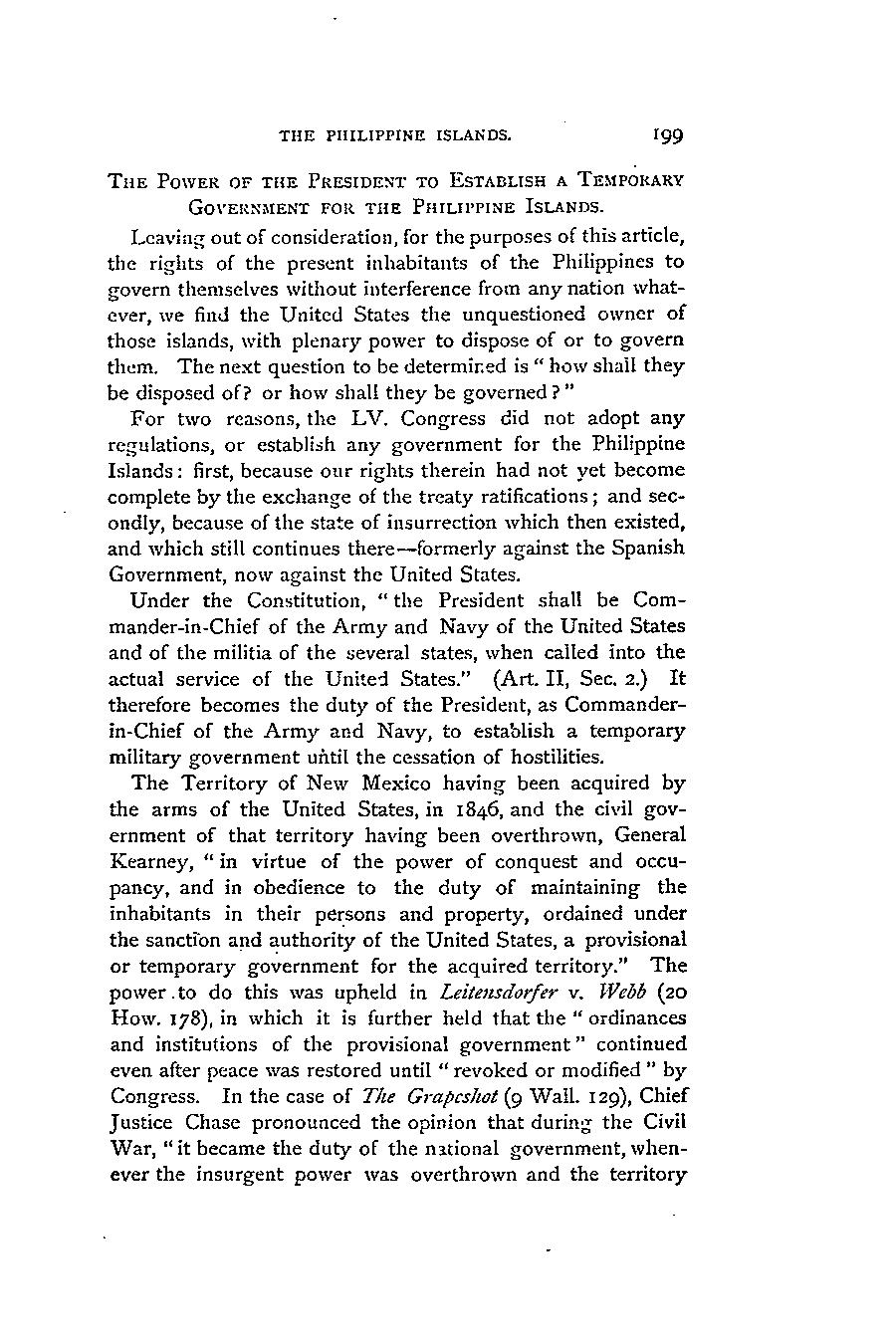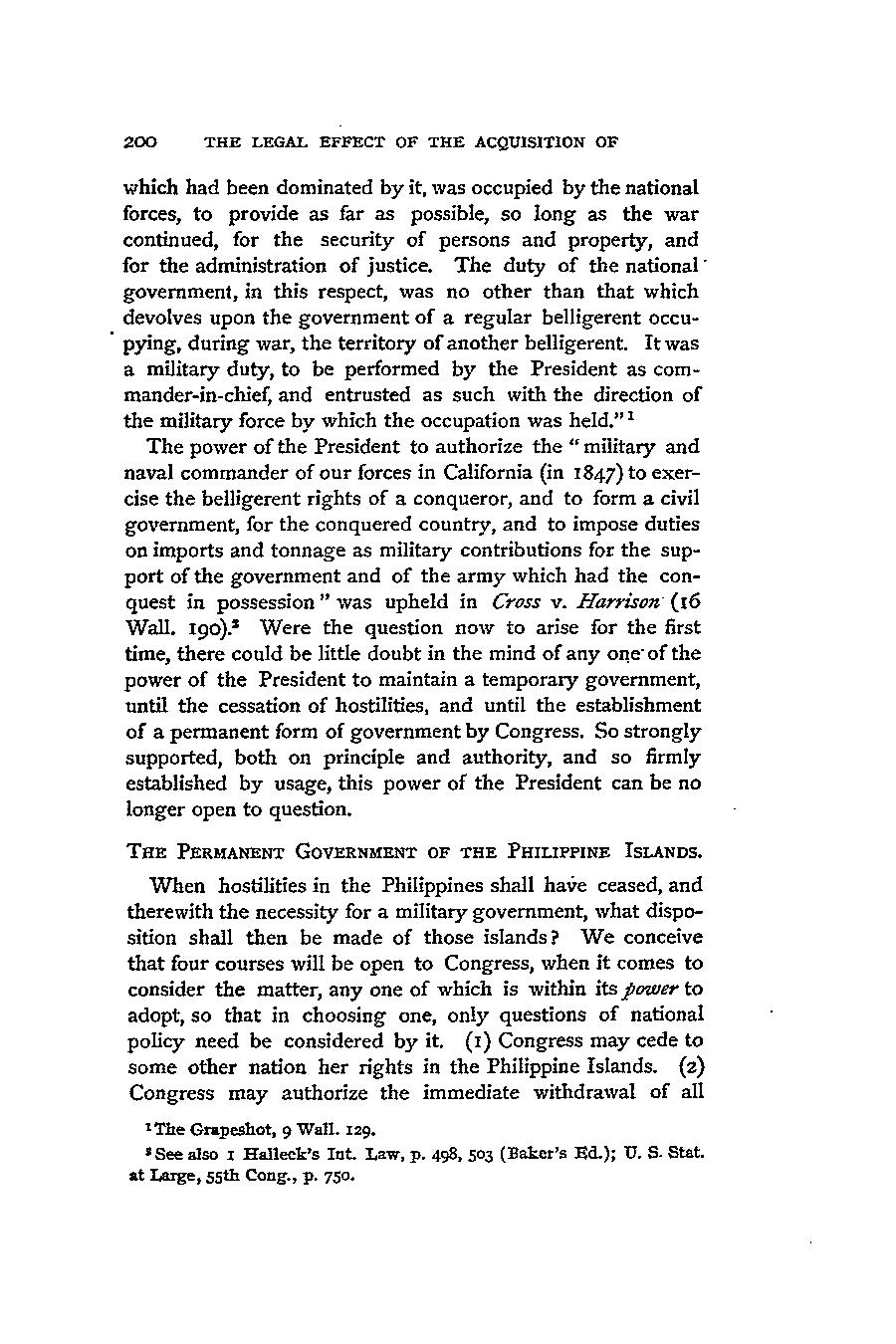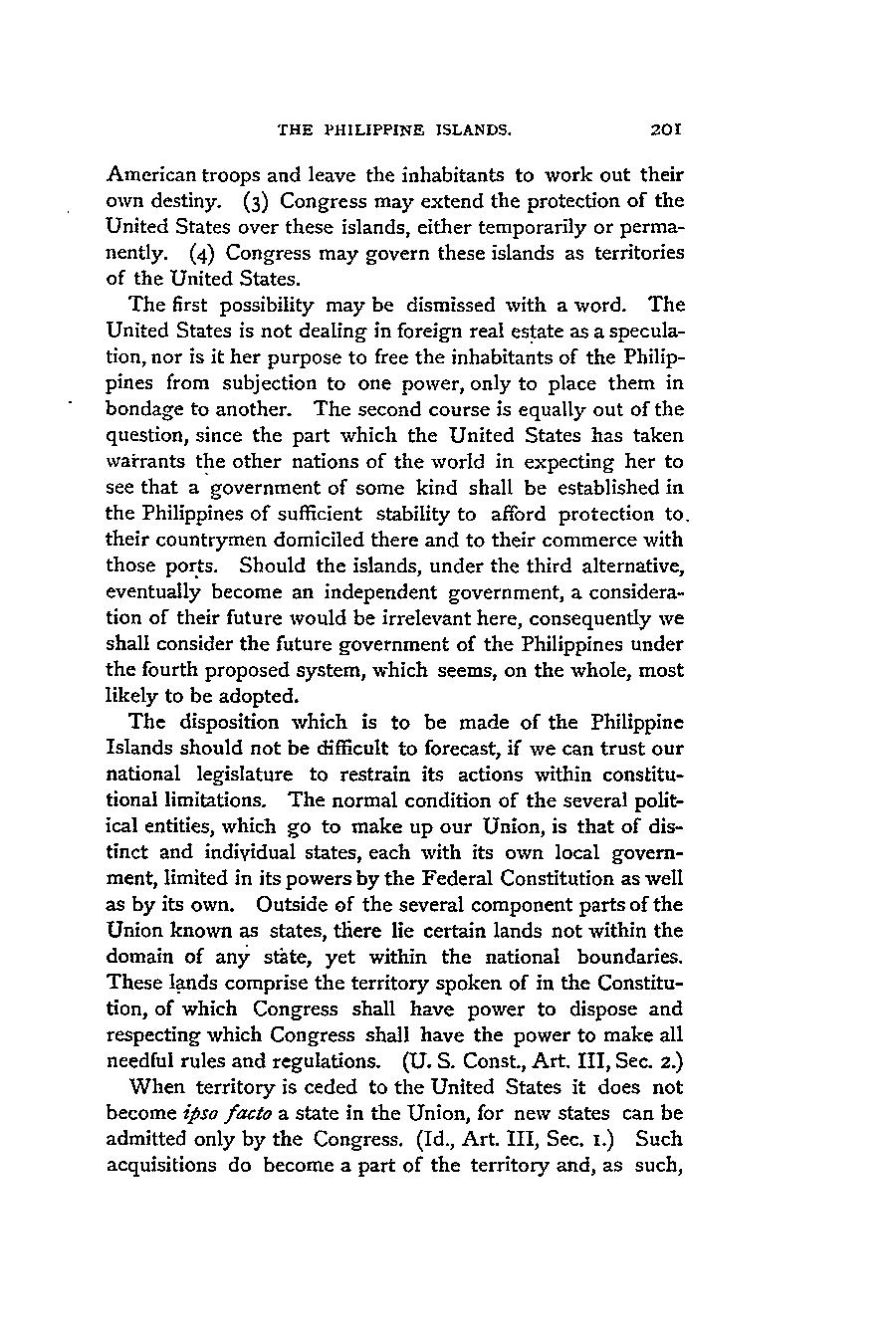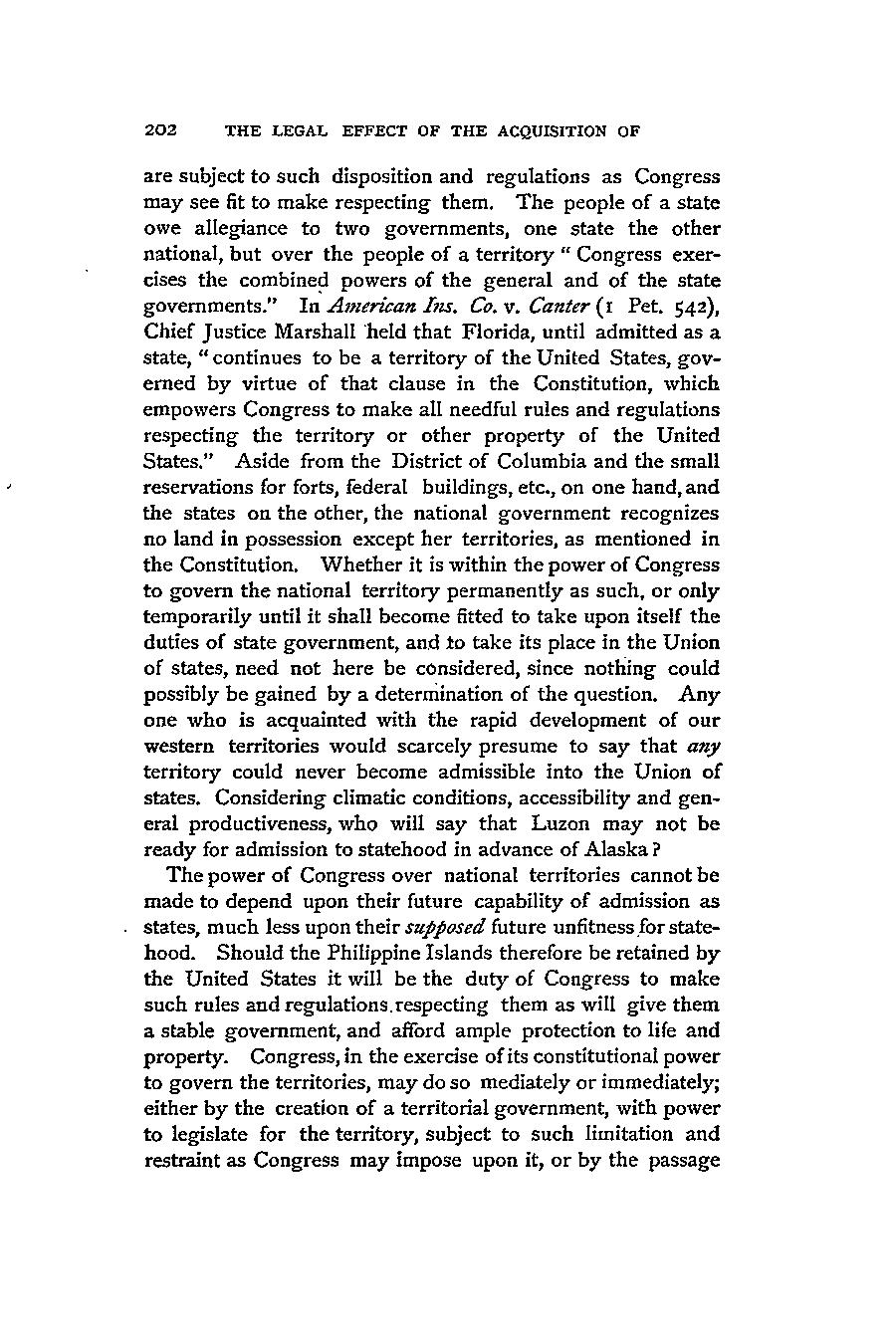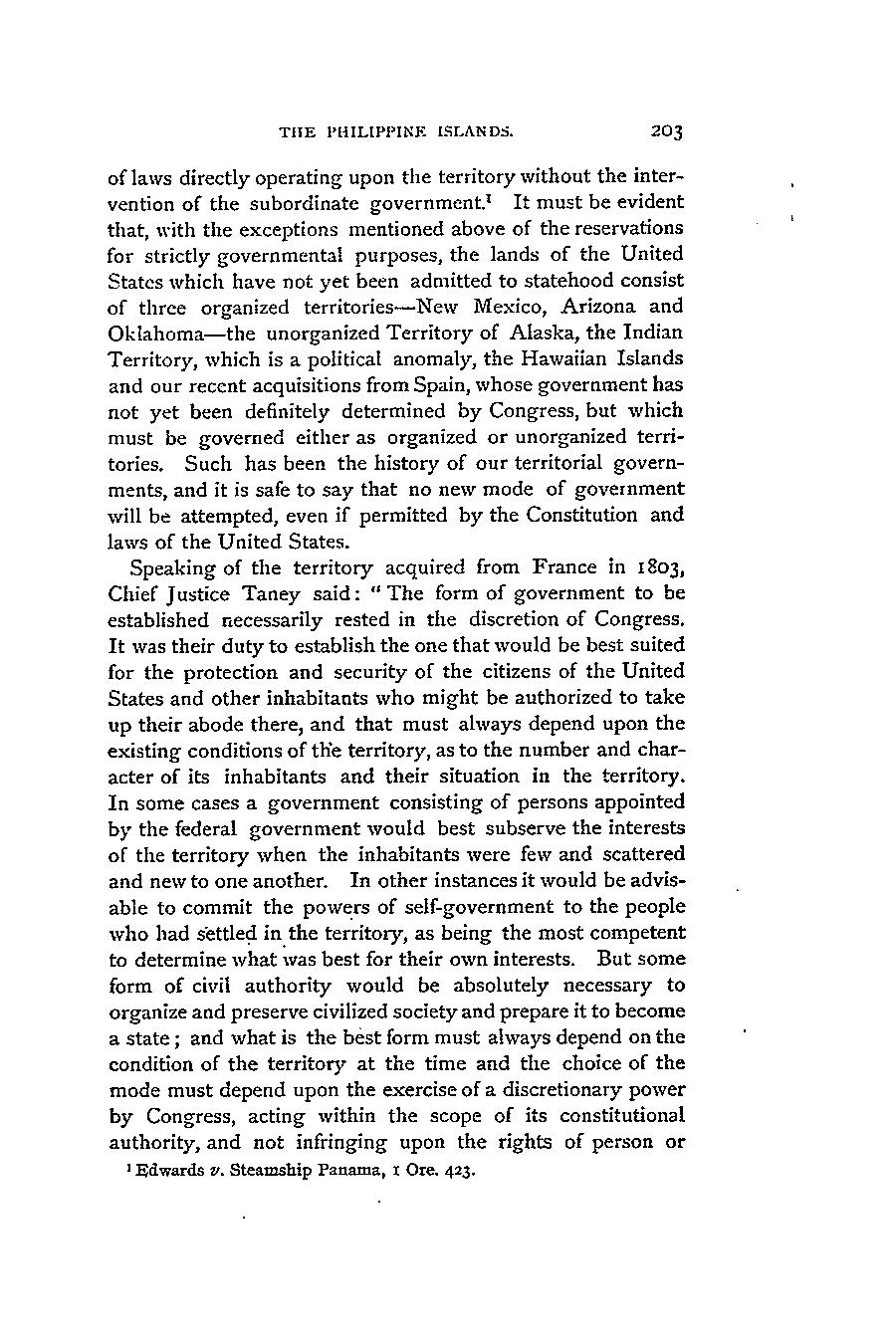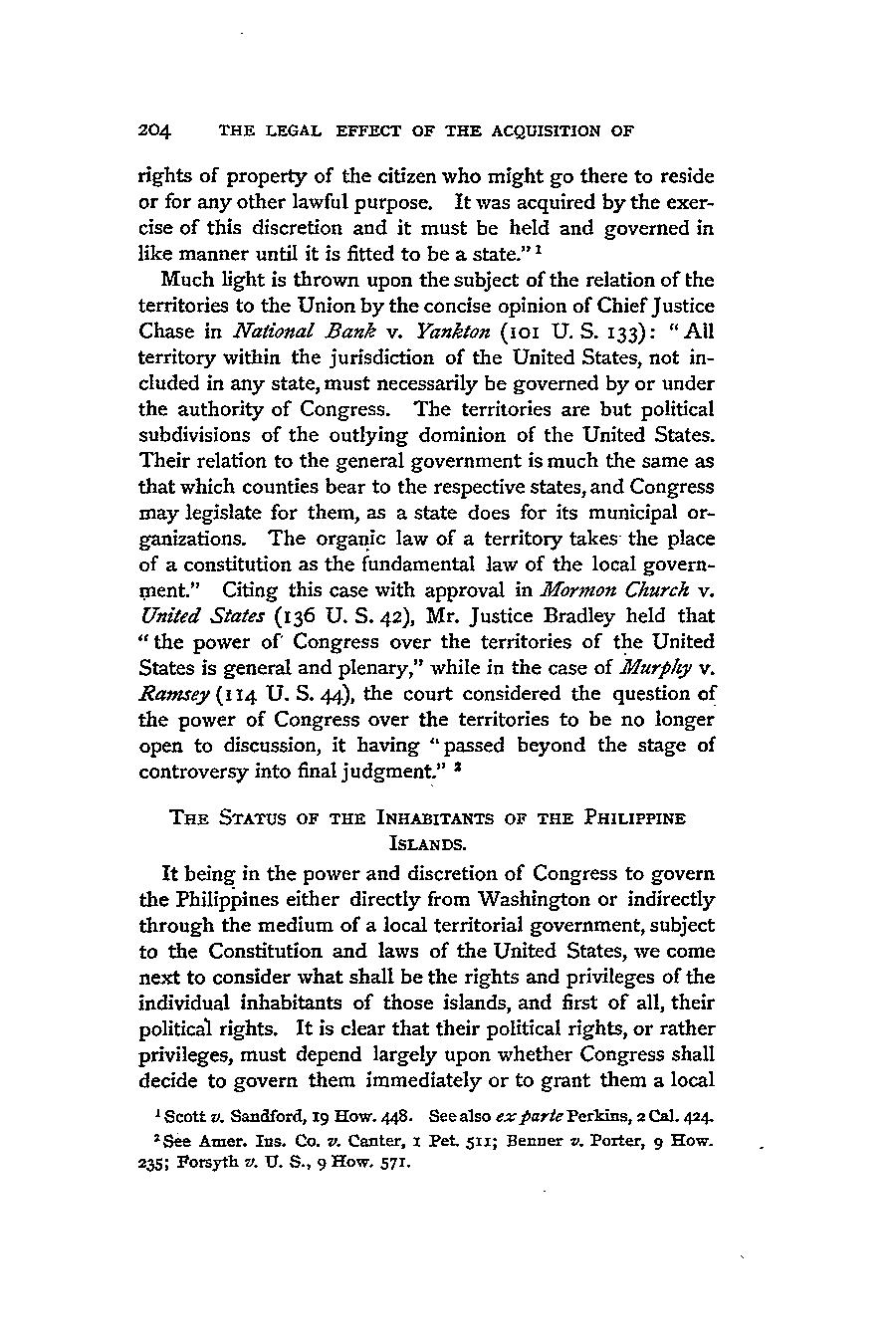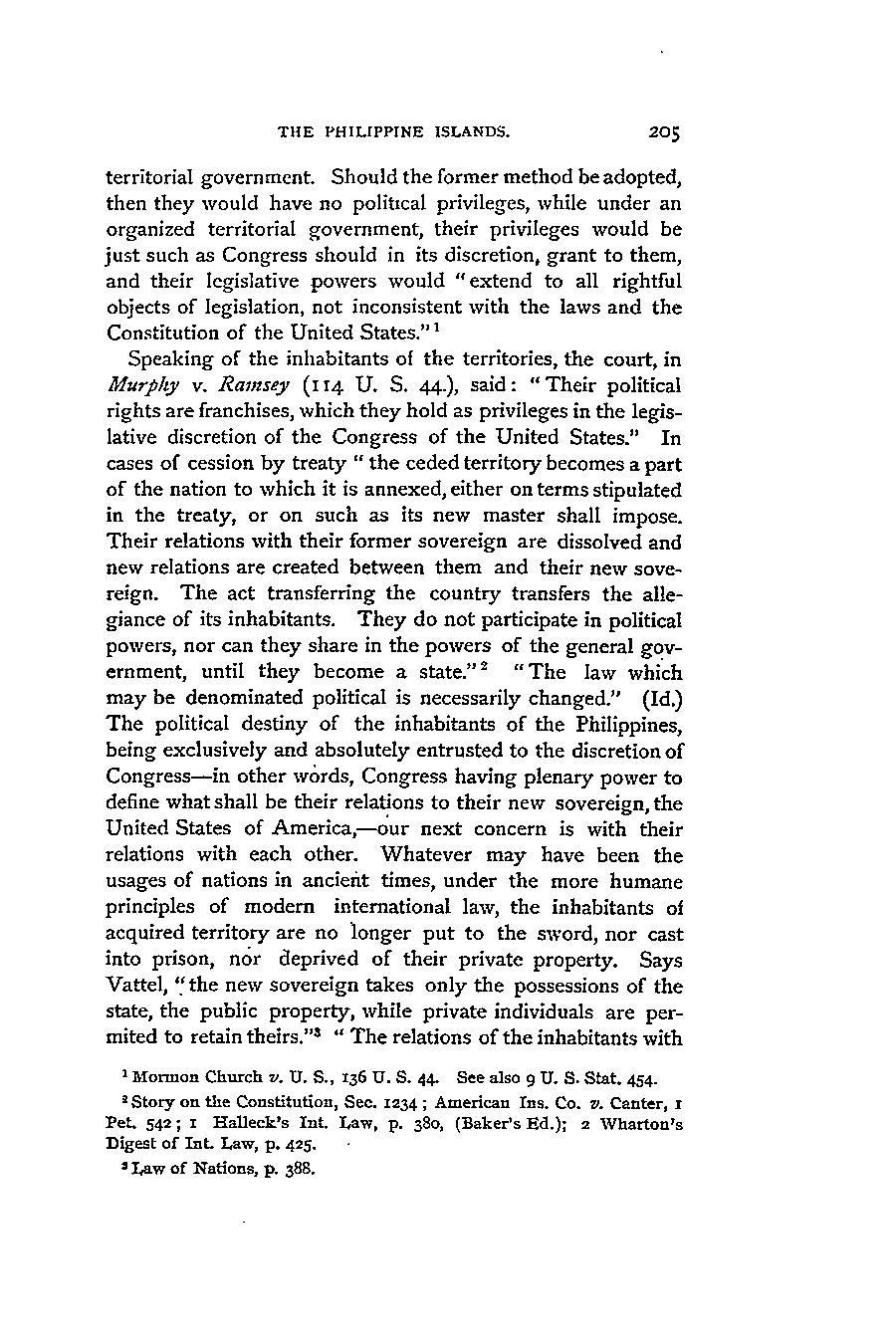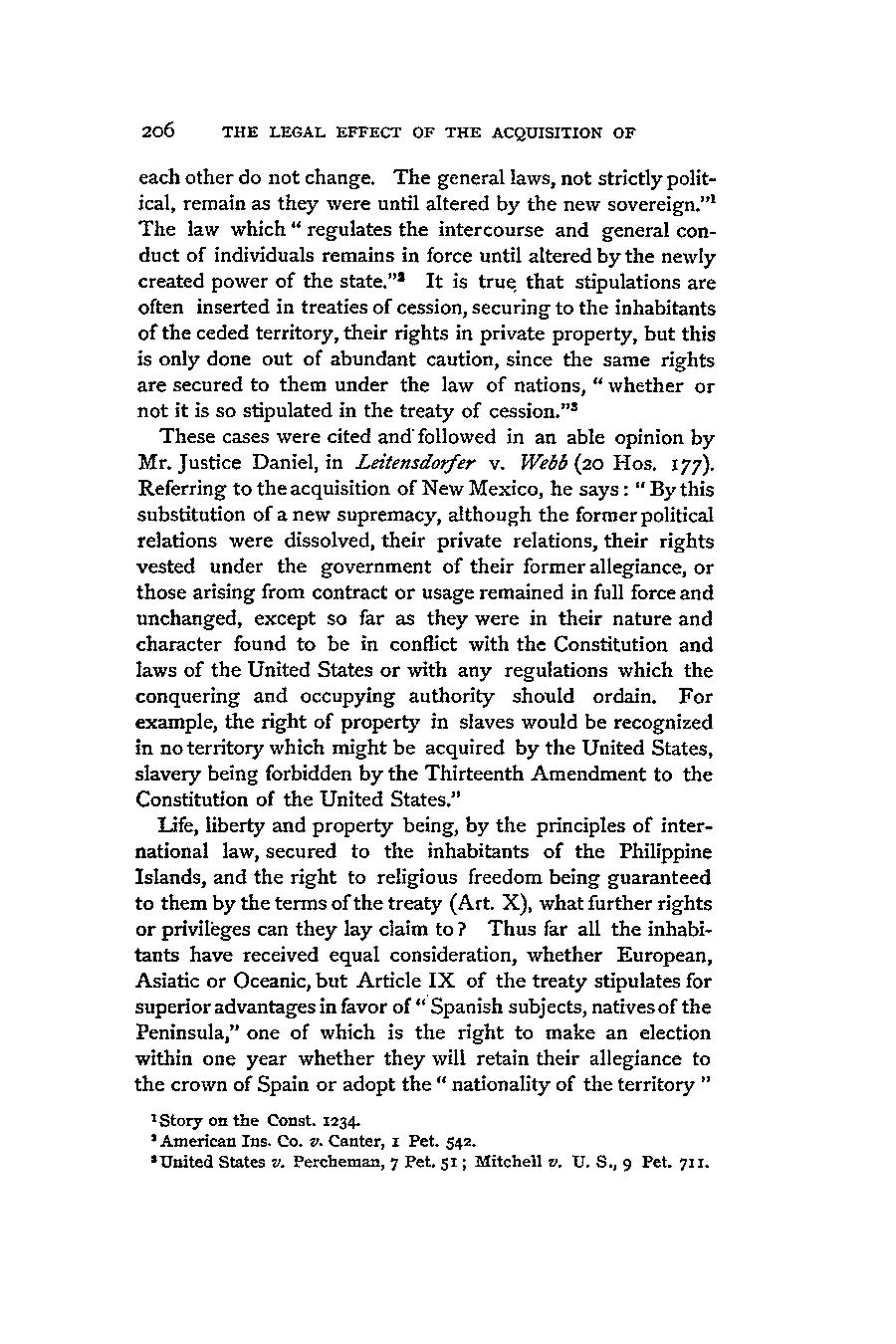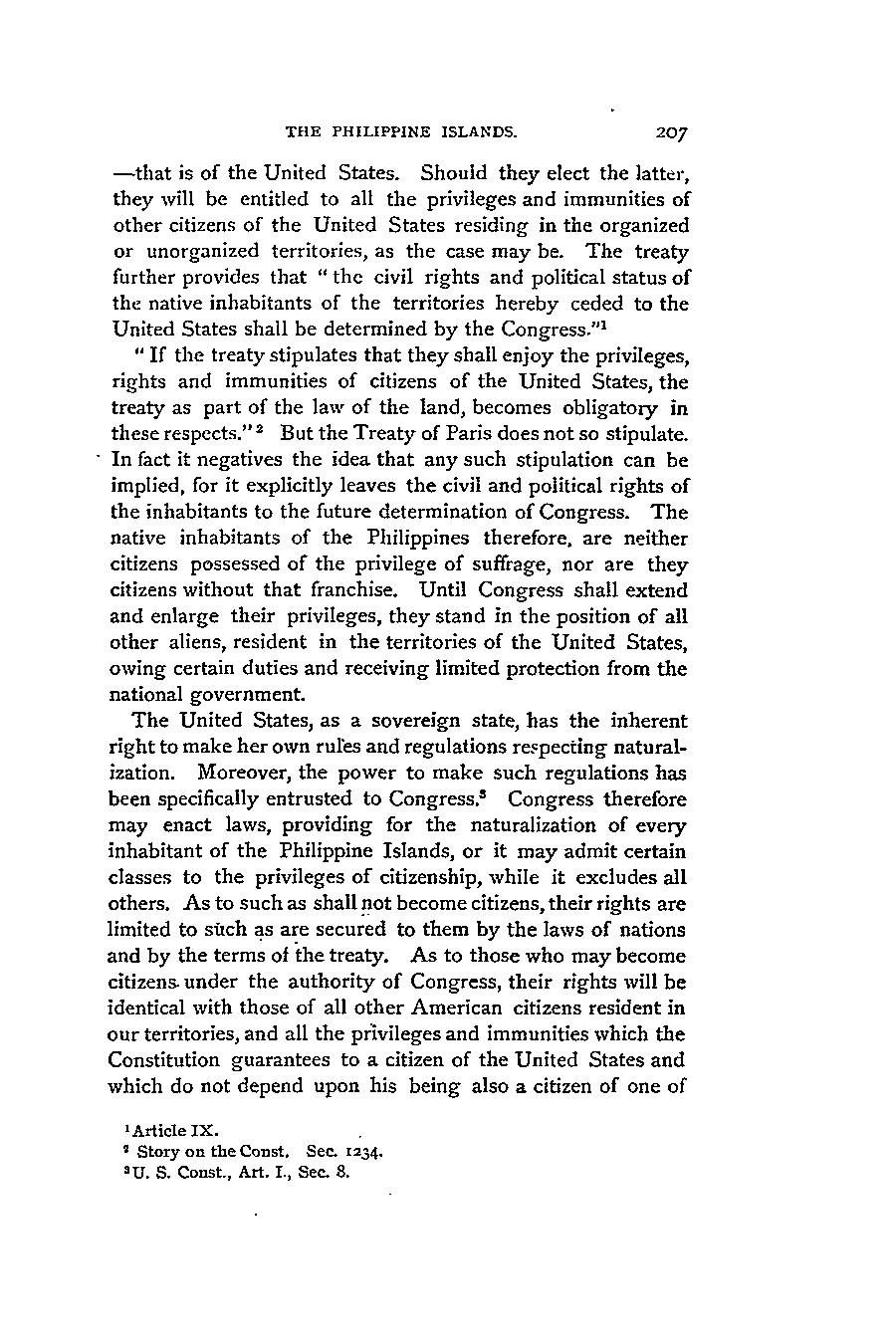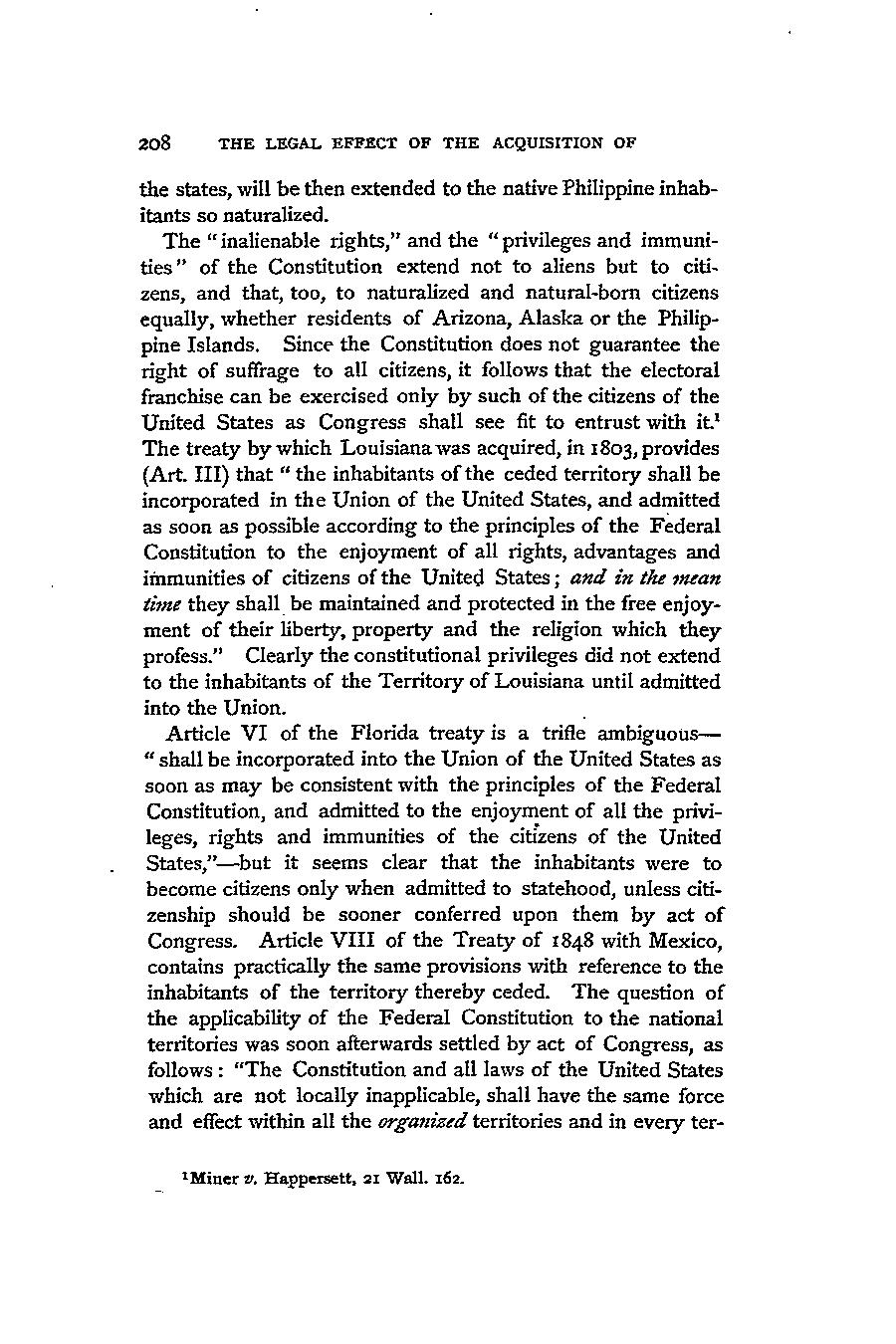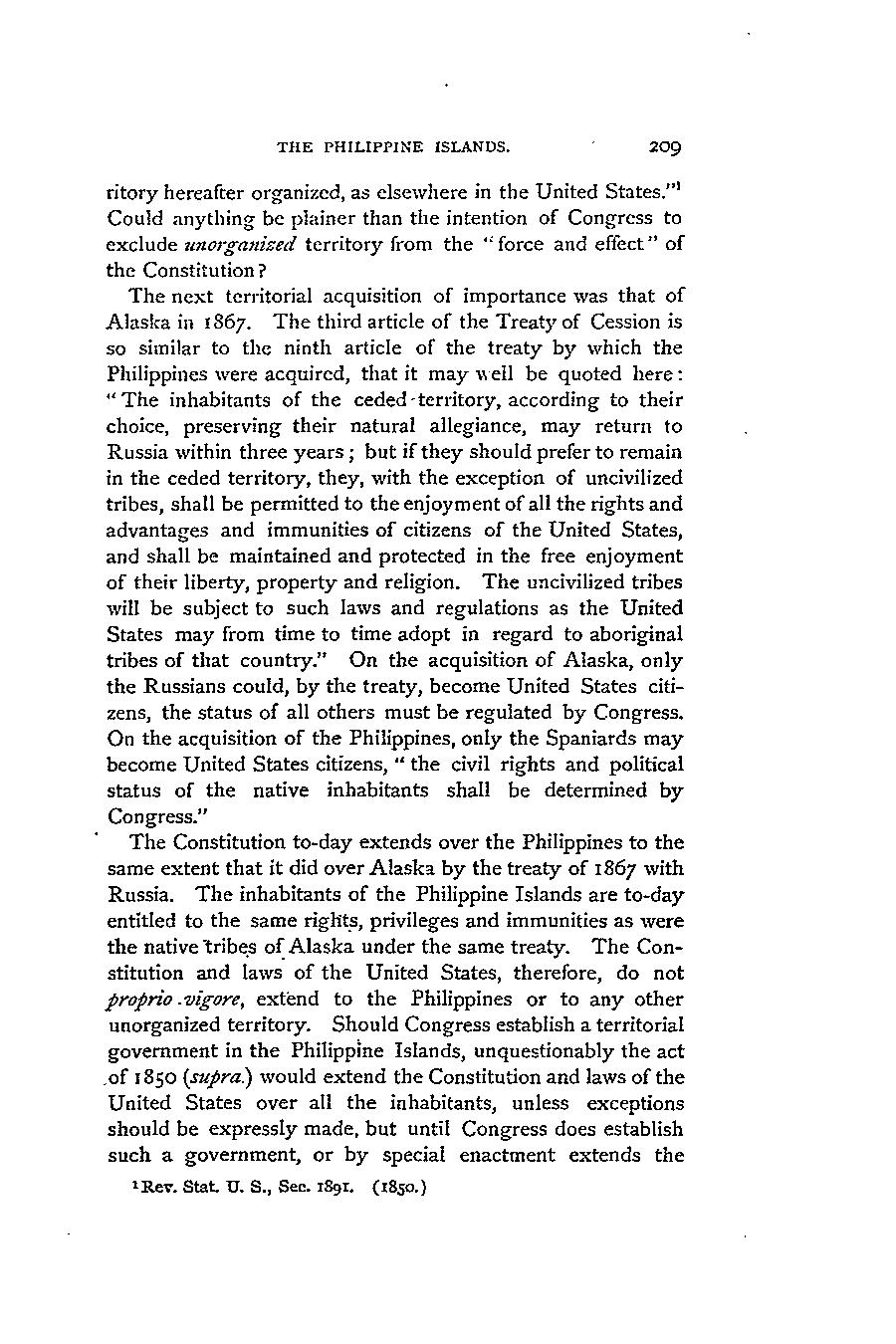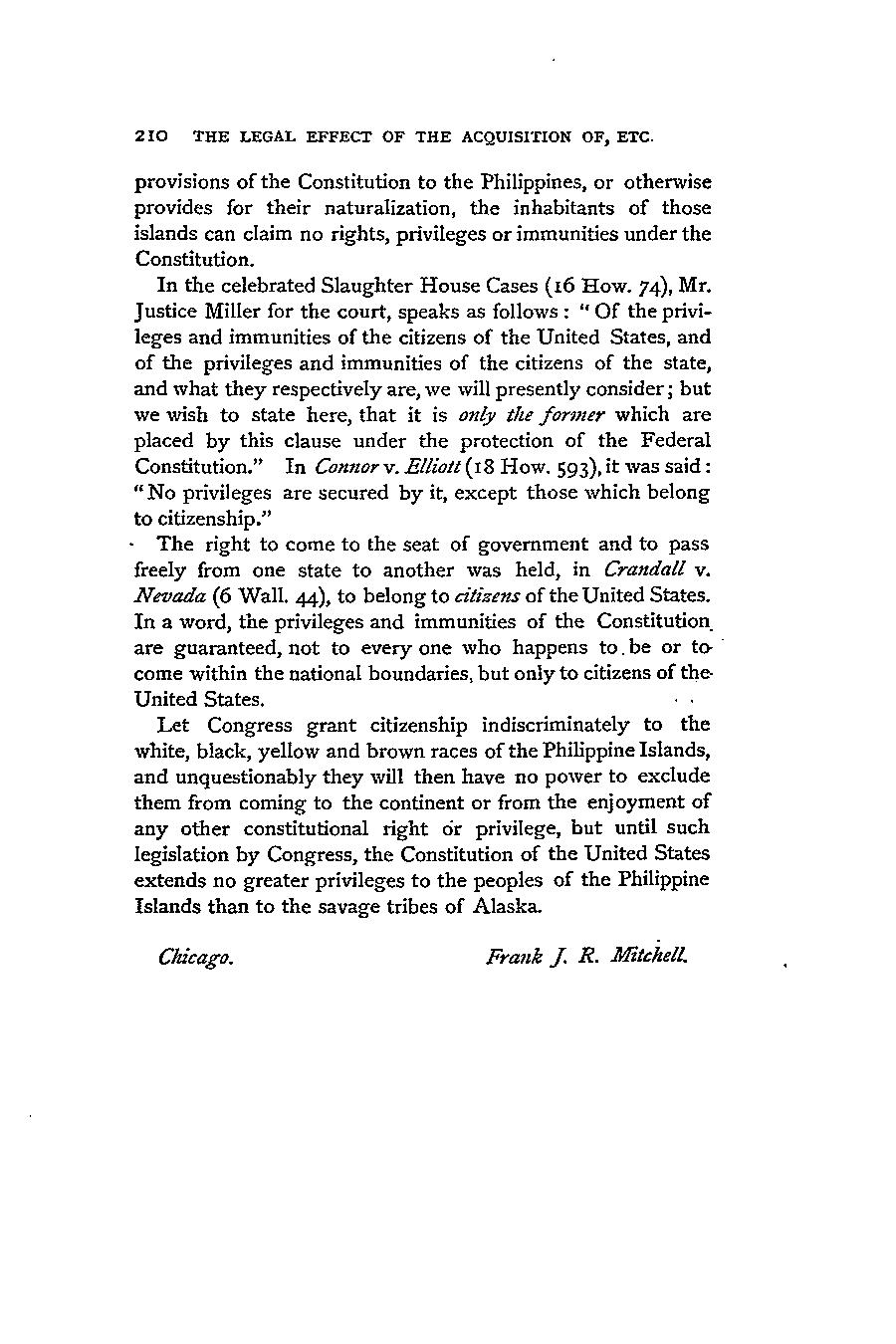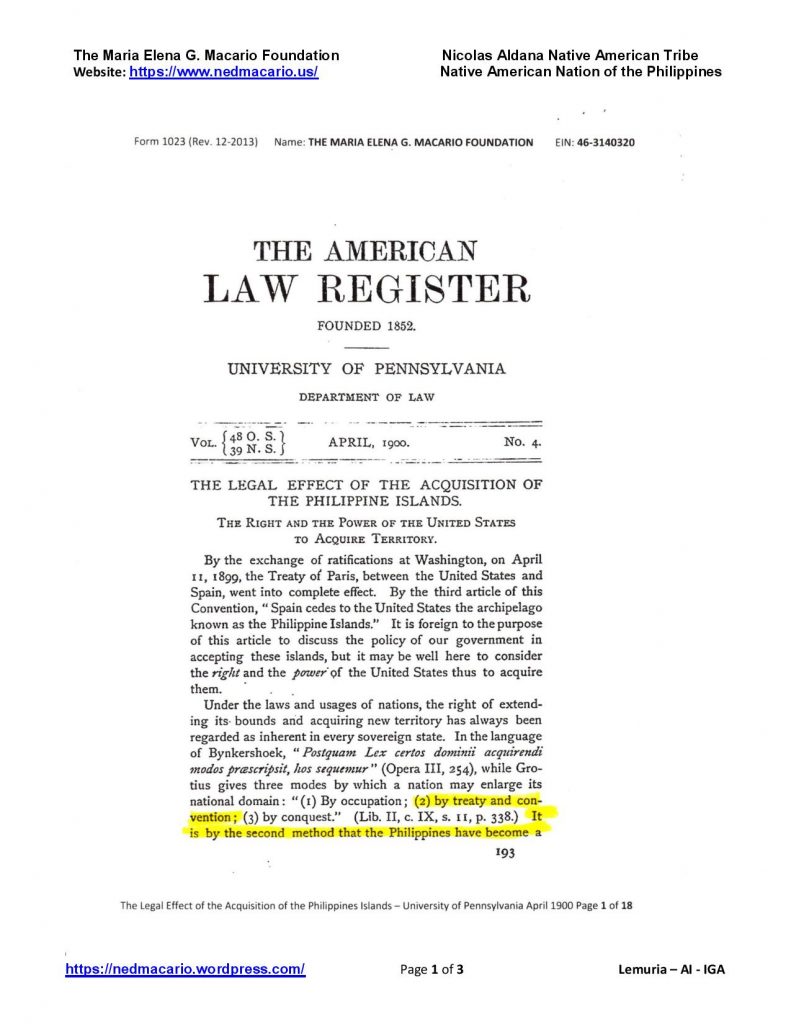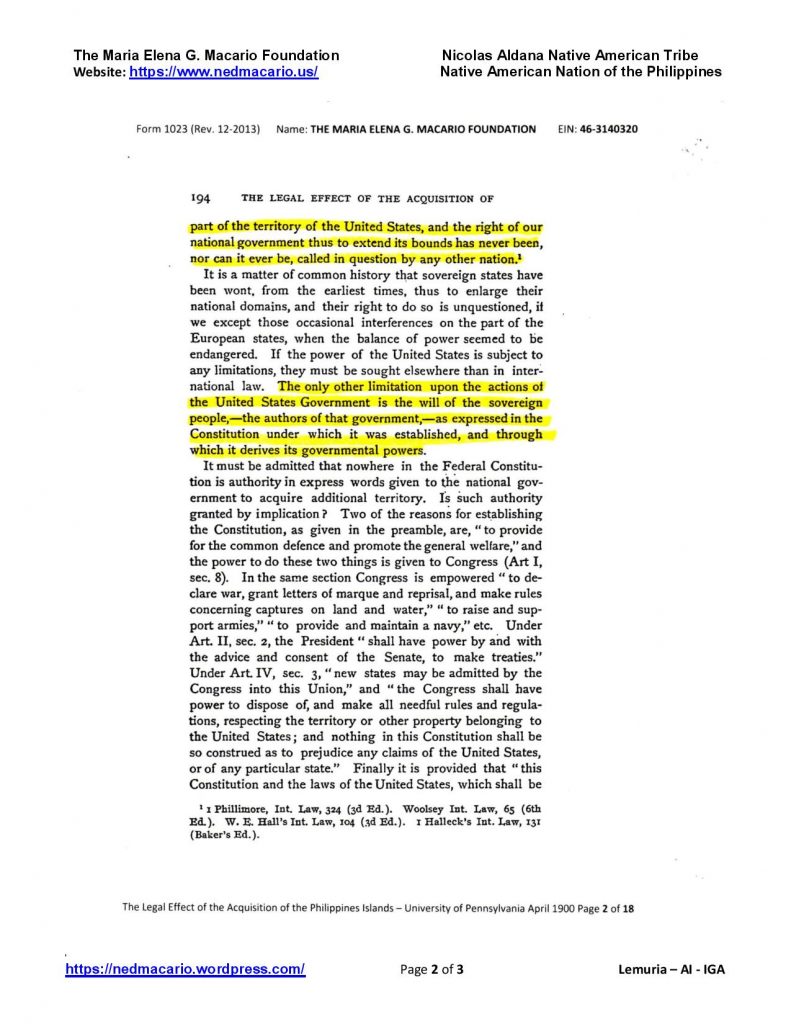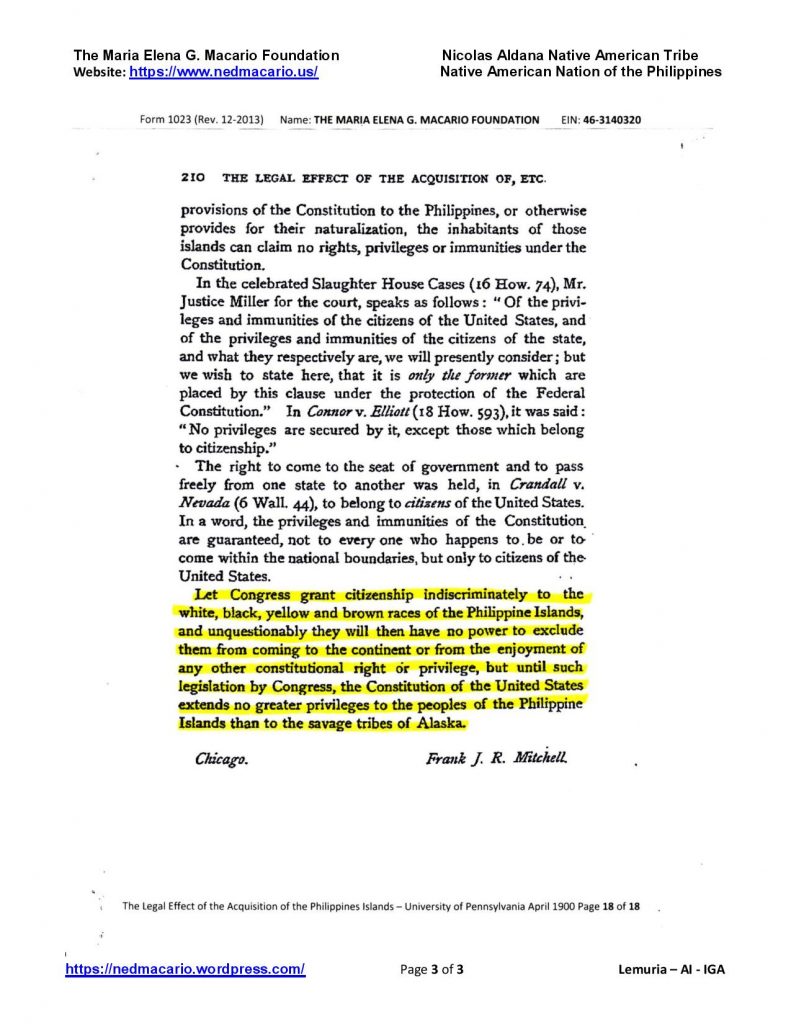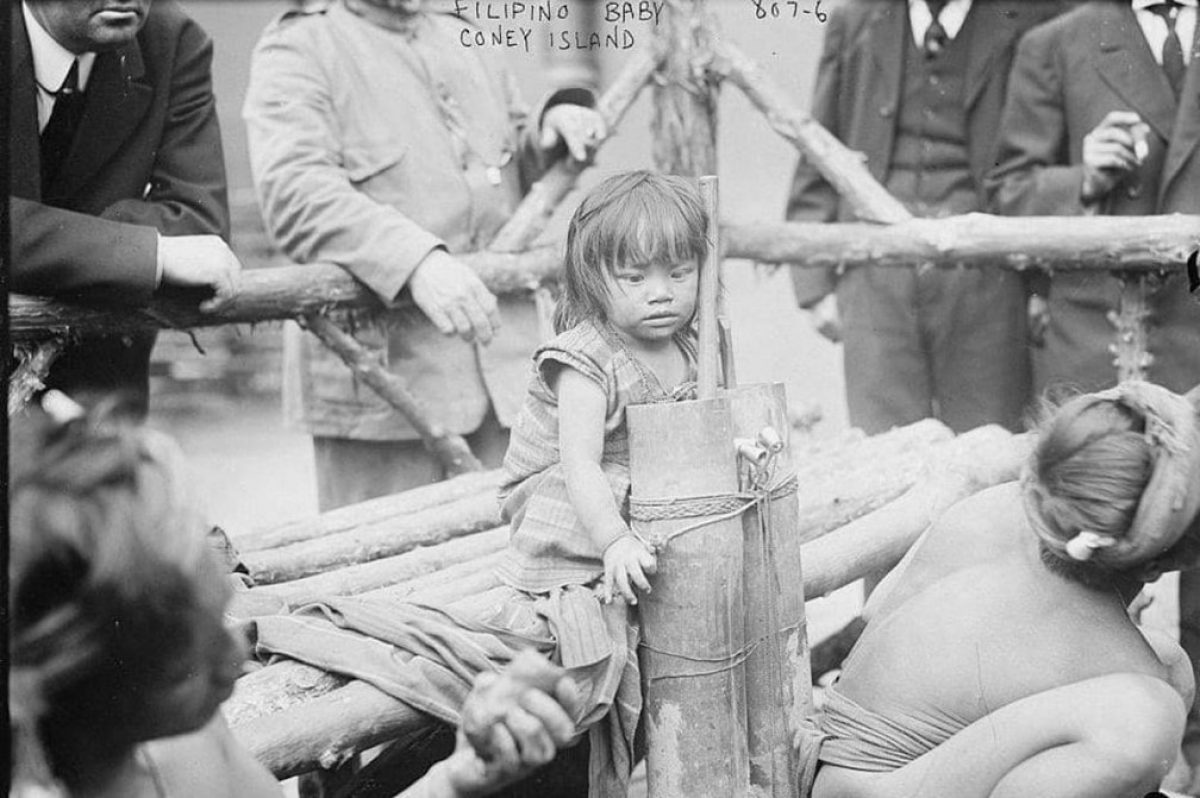March 15, 2016 – This law review published by University of Pennsylvania’s Department of Law in April 1900 proves that the Philippines is a U.S. territory and was never a U.S. colony. On 28 April 2014, Pres. Obama relinquished American claim over the Philippines in a joint press conference with Aquino III in Manila.
THE LEGAL EFFECT OF THE ACQUISITION OF THE PHILIPPINE ISLANDS. -University of Pennsylvania, April 1900 HIGHLIGHTS:
– The Philippines became a part of the U.S. territory by treaty and convention and “the right of our (US) national government thus to extend its bounds has never been, nor can it ever be, called in question by any other nation.” (Pages 193 & 194)
– The only other limitation on the US Government’s action is the will of the American people from whence the government derives its powers as stated in the U.S. Constitution. (Page 194) (Hence the need for a referendum if Filipinos wanted the Philippine Commonwealth Act of 1934; the Rescission Act of 1946 when Filipinos were stripped of their US. Nationality and the Treaty of Manila that granted independence to the Philippines as ratified by the U.S. Senate on 22 Oct. 1946 . – BM)
– Constitution and the laws of the United States shall be the supreme law of newly acquired territory. (Pages 194 & 195) – Pres. Jefferson sought the amendment of the Constitution to make the Louisiana Purchase possible. Napoleon Bonaparte bought Louisiana from Spain and then sold the same to the U.S. Based on this constitutional amendment, Louisiana and other purchases and annexations followed including the acquisition of Florida, what became part of Arizona (Gadsen Treaty) Alaska and the annexation of Hawaii in 1898. (Pages 195, 196 & 197)
– With the right to acquire territories comes the authority to govern. Acquired territories are not entitled to self-governance.
Therefore, they must be under the dominion and jurisdiction of the Union “or it would be without any government at all.” (Page 197)
Here is the last paragraph of the Law Review p.210: “The Legal Effect of the Acquisition of the Philippine Islands – April 1900”
“Let (the US) Congress GRANT CITIZENSHIP INDISCRIMINATELY to the white, black, yellow and BROWN races of the Philippine Islands, and questionably they will then have NO POWER TO EXCLUDE THEM FROM COMING TO THE (U.S. ) CONTINENT OR FROM THE ENJOYMENT OF ANY OTHER CONSTITUTIONAL RIGHT OR PRIVILEGE, but until such legislation by Congress, the Constitution of the United States EXTENDS NO GREATER PRIVILEGES TO THE PEOPLES OF THE PHILIPPINE ISLANDS THAN TO THE SAVAGE TRIBES OF ALASKA.
Chicago. Frank J.R. Mitchell
========================
Source: THE LEGAL EFFECT OF THE ACQUISITION OF THE PHILIPPINE ISLANDS. – University of Pennsylvania, April 1900 http://scholarship.law.upenn.edu/cgi/viewcontent.cgi?article=5926&context=penn_law_review